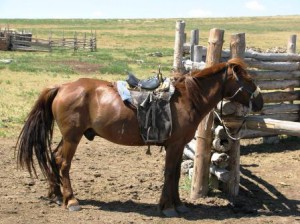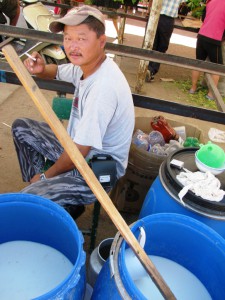Our friends at Bioversity International have a nice piece on IUCN’s website summarizing their work on in situ conservation of crop wild relatives with over 60 partners in five countries around the world. I liked the general tone of understatement: “What became obvious from the project’s outset was that the in situ conservation of CWR is not an easy task and cannot be achieved alone.” The practical lessons of the project have been brought together in a manual.
The piece also includes a trenchant quote from a recent IUCN publication: ((Amend T., Brown J., Kothari A., Phillips A. and Stolton S. (eds.) 2008. Protected Landscapes and Agrobiodiversity Values. Volume 1 in the series, Protected Landscapes and Seascapes, IUCN & GTZ. Kasparek Verlag, Heidelberg.))
In general, the idea that the conservation of agrobiodiversity is a potentially valuable function of a protected area is as yet little recognised. For example, it would appear from the case studies that it hardly ever appears explicitly in protected area legislation, and rarely in management plans. Indeed, a study by WWF found that the degree of protection in places with the highest levels of crop genetic diversity is significantly lower than the global average; and even where protected areas did overlap with areas important for crop genetic diversity (i.e. landraces and crop wild relatives), little attention was given to these values in the management of the area (Stolton et al 2006).
 They may be trying to
They may be trying to 

